Area Monitors
Area monitors are crucial for maintaining safety in environments where the risk of hazardous gas exposure is present. Designed to provide real-time, continuous monitoring over a specified area, these devices detect and alert personnel to the presence of harmful gases before they reach dangerous levels. At Rockall Safety, we offer a range of high-quality area monitors sourced from leading manufacturers to ensure reliable, accurate detection for industrial applications.
Our monitors are equipped with advanced sensors that can detect a variety of gases, including methane, hydrogen sulfide, and volatile organic compounds (VOCs). Featuring robust construction, user-friendly interfaces, and wireless connectivity options, they offer flexibility and ease of use for diverse working environments. Whether it’s a chemical plant, oil rig, or confined space, our area monitors help to safeguard workers, reduce risks, and support compliance with health and safety regulations.
For more information, call 02920 759 683 or complete the form here.
Area Monitors
Area monitors are crucial for maintaining safety in environments where the risk of hazardous gas exposure is present. Designed to provide real-time, continuous monitoring over a specified area, these devices detect and alert personnel to the presence of harmful gases before they reach dangerous levels. At Rockall Safety, we offer a range of high-quality area monitors sourced from leading manufacturers to ensure reliable, accurate detection for industrial applications.
Our monitors are equipped with advanced sensors that can detect a variety of gases, including methane, hydrogen sulfide, and volatile organic compounds (VOCs). Featuring robust construction, user-friendly interfaces, and wireless connectivity options, they offer flexibility and ease of use for diverse working environments. Whether it’s a chemical plant, oil rig, or confined space, our area monitors help to safeguard workers, reduce risks, and support compliance with health and safety regulations.
For more information, call 02920 759 683 or complete the form here.
SKU: GDC-EXO-8

Blackline EXO 8 Area Monitor
- Gas Detection Class Area Monitors
- ATEX ATEX
- Temperature -20°C to 50°C (-4°F to 122°F)
- Display 4.4“ diagonal, 480 by 640 pixel, eight-colour active matrix liquid crystal display
- Gas Type Nitrogen Dioxide - NO2, Oxygen - O2, Sulfur Dioxide - SO2, Ammonia - NH3, VOCs, Carbon Dioxide - CO2, Carbon Monoxide - CO, Chlorine - Cl2, Chlorine Dioxide - ClO2, Infrared, Hydrogen Cyanide, Hydrogen Sulfide - H2S
- Brand Blackline Safety
View productSKU: J-G7EXO-X-X-HIMO-EU2-XX3

Blackline G7 EXO Area Monitor
- Gas Detection Class Area Monitors
- ATEX ATEX
- Temperature -20°C to 50°C (-4°F to 122°F)
- Display 4.4“ diagonal, 480 by 640 pixel, eight-colour active matrix liquid crystal display
- Gas Type Hydrogen Cyanide, Hydrogen Sulfide - H2S, Nitrogen Dioxide - NO2, Oxygen - O2, Sulfur Dioxide - SO2, Ammonia - NH3, VOCs, Carbon Dioxide - CO2, Carbon Monoxide - CO, Chlorine - Cl2, Infrared, Chlorine Dioxide - ClO2
- Brand Blackline Safety
View productSKU: DP-AAAGCNCS-D001-A

Crowcon Detective LEL, O2, H2S, CO (H2 filtered) Diffusion
- Gas Detection Class Area Monitors
- ATEX ATEX
- Display High contrast LCD with back light
- Temperature -20°C to + 50°C (-4°F to 122°F)
- Battery Run Time Up to 36 hours with 7.2Ah battery
- Brand Crowcon
View productSKU: 8324819

Dräger X-zone 5500 Gas Detector
- Gas Detection Class Multi Gas, Area Monitors
- ATEX ATEX
- Battery Run Time Approx. 120 h (24 Ah battery)
- Temperature -10 °C – +40 °C / 14 °F – 104 °F
- Data Logging 8 MB, 270,000 data sets
- Brand Dräger
View productSKU: HW-RIGRAT

Honeywell BW RigRat
- Gas Detection Class Area Monitors
- ATEX ATEX
- Gas Type Carbon Monoxide - CO, Chlorine - Cl2, Flammable - LEL, VOCs, Hydrogen Cyanide, Hydrogen Sulfide - H2S, Nitrogen Dioxide - NO2, Nitric Oxide - NO, Oxygen - O2, Sulfur Dioxide - SO2, Ammonia - NH3
- Brand Honeywell, BW Technologies
View productSKU: BZ1-KXXXXX0201

Industrial Scientific Radius BZ1 Area Monitor
- Gas Detection Class Area Monitors
- ATEX ATEX
- Battery Run Time 7 days (168 hours) typical @ 20 ºC, without pump, with wireless
- Temperature -20 °C to 55 °C (-4 °F to 131 °F)
- Data Logging At least 3 months at 10-second intervals
- Gas Type Carbon Monoxide - CO, Flammable - LEL, Hydrogen Sulfide - H2S, Oxygen - O2, Sulfur Dioxide - SO2, VOCs
- Brand Industrial Scientific
View productSKU: W01B1XXXXXXXXXXXXX

Rae Systems AreaRAE Plus Gas Detector
- Gas Detection Class Area Monitors
- ATEX Non ATEX
- Display Large 240 x 320 pixel LCD backlit display
- Temperature -20 °C to +50 °C / (- 4 °F to +122 °F)
- Battery Run Time 20 hours with wireless connectivity on Li-ion battery pack
- Brand Rae Systems
View productSKU: W01A1XXXXXXXXXXXXX

Rae Systems AreaRAE Pro Gas Detector
- Gas Detection Class Area Monitors
- ATEX ATEX
- Temperature -20 °C to +50 °C / (- 4 °F to +122 °F)
- Display Large 240 x 320 pixel LCD backlit display
- Battery Run Time 20 hours with wireless connectivity on Li-ion battery pack
- Brand Rae Systems
View product









